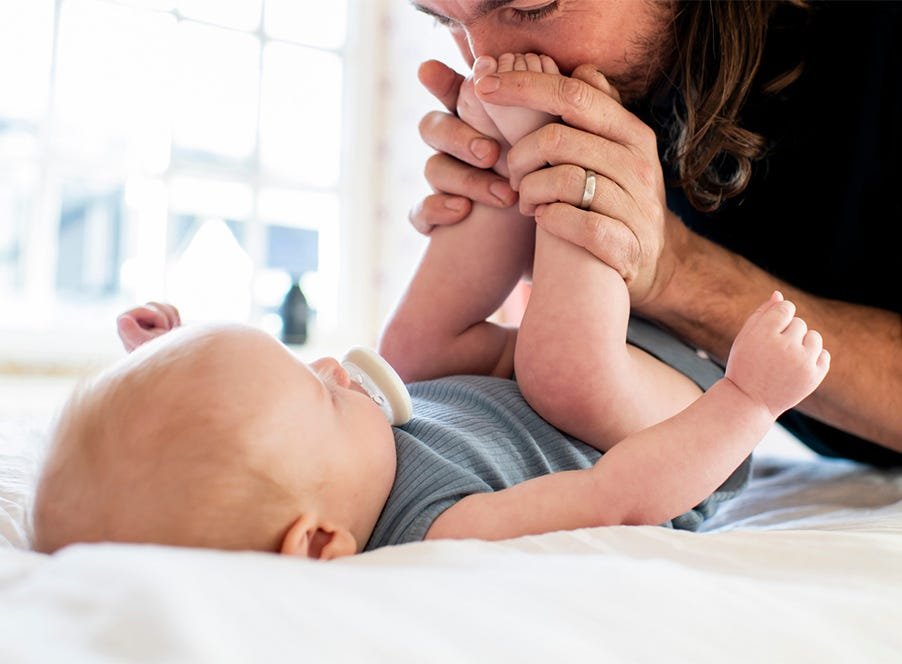Diaper rash... it's sore, it's red and it's uncomfortable for your little one.
But parents should never feel guilty if their baby does get diaper rash. It's just part of having a baby. And although it's more common in bigger babies and toddlers than it is in newborns, the majority of babies will experience diaper rash at least once in the first two years of their life.
We're here to talk you through what diaper rash is, what causes it and how to treat it. Let's get into it.
What is diaper rash?
By definition, diaper rash is an acute inflammatory reaction of the skin in the diaper area.
What are the symptoms of diaper rash?
If a little one has diaper rash, they may appear distressed, agitated, or uncomfortable, as the rash may be itchy and painful. The rash will be visible and show as patches of inflamed skin on your baby's bottom.
In severe cases, there might be small specks of blood in their diaper, from irritated skin. You might also notice that your little one is fussy or seems irritated, especially when they're having a wee or a poo, or when you're changing their diaper. In other cases, they might not seem bothered at all!
What does diaper rash look like?
It's good to know exactly what you're looking for when it comes to diaper rash. The rash itself can range from a mild to a large rash that can spread across a baby's bottom and thighs.
The skin around their diaper area may be...
- red or inflamed
- spotty or bumpy
- hot to touch
- blistered
The different types of diaper rash
If you're looking to get scientific, there are a bunch of different types of diaper rash that your baby could get - some more common than others:
-
Irritant dermatitis: The most common type of diaper rash, irritant dermatitis is caused by a wet diaper being in contact with your baby's skin. To avoid this, you should change your baby's diaper regularly and use a solid diaper cream.
-
Candidiasis (yeast infection): Yeast overgrowth in the diaper region is often caused by diarrhoea or tight diapers. A good diaper cream should be able to tackle this, but if not, you can always visit your doctor.
-
Bacterial infections: This infection is often caused when a baby's skin is already irritated, and bacteria builds in irritated areas. Antibiotics are normally needed for a bacterial infection. So, if you notice puss-filled blisters or hard scabs around their diaper area, you should consult your doctor.
What causes diaper rash?
Diaper rash is commonly caused by an irritant contact dermatitis, but there are also some other common causes to look out for. These can include:
- Their diaper isn't being changed often enough and their skin is becoming irritated by the moisture. Your baby has super sensitive skin which doesn't like to be wet or irritated. Unfortunately, your baby also likes to wee and poo in their diaper, and even the most absorbent diaper will still leave some moisture on your baby's skin.
- Their diaper may be too tight and is rubbing on their skin.
- The skin in their diaper area hasn't been cleaned thoroughly enough during changes.
- Their skin could be reacting to irritants in soaps, wipes, or detergent.
- Diarrhoea is causing extra moisture to build up in their diaper.
- Your baby has recently been treated with antibiotics.









